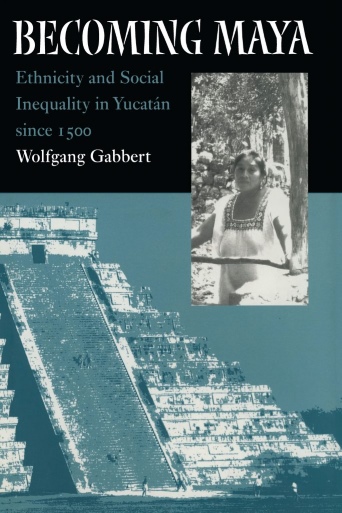Violence and the Caste War of Yucatan (2019)



Violence and The Caste War of Yucatán analyzes the extent and forms of violence employed during one of the most significant indigenous rural revolts in nineteenth-century Latin America: the Caste War of Yucatán in the tropical southeast of Mexico. Combining the results of historical, anthropological, and sociological research with the thorough investigation of primary sources from numerous archives, the book ascertains that violence was neither random nor the result of individual bloodthirstiness but in many cases followed specific patterns related to demographic, economic, political, and military factors. In addition to its use against the enemy, violence also played a role in the establishment and maintenance of order and leadership within the ranks of the contending parties. While the Caste War has been widely considered a conflict between the whites and the Maya, this book shows that Indians and non-Indians fought and died on both sides.
Becoming Maya : ethnicity and social inequality in Yucatán since 1500 (2004)



In Mexico's Yucatan peninsula, it is commonly held that the population consists of two ethnic communities: Maya Indians and descendants of Spanish conquerors. As a result, the history of the region is usually seen in terms of conflict between conquerors and conquered that too often ignores the complexity of interaction between these groups and the complex nature of identity within them. Yet despite this prevailing view, most speakers of the Yucatec Maya language reject being considered Indian and refuse to identify themselves as Maya. Wolfgang Gabbert maintains that this situation can be understood only by examining the sweeping procession of history in the region. In Becoming Maya, he has skillfully interwoven history and ethnography to trace 500 years of Yucatec history, covering colonial politics, the rise of plantations, nineteenth-century caste wars, and modern reforms-always with an eye toward the complexities of ethnic categorization. According to Gabbert, class has served as a self-defining category as much as ethnicity in the Yucatan, and although we think of caste wars as struggles between Mayas and Mexicans, he shows that each side possessed a sufficiently complex ethnic makeup to rule out such pat observations. Through this overview, Gabbert reveals that Maya ethnicity is upheld primarily by outsiders who simply assume that an ethnic Maya consciousness has always existed among the Maya-speaking people. Yet even language has been a misleading criterion, since many people not considered Indian are native speakers of Yucatec. By not taking ethnicity for granted, he demonstrates that the Maya-speaking population has never been a self-conscious community and that the criteria employed by others in categorizing Mayas has changed over time. Grounded in field studies and archival research and boasting an exhaustive bibliography, Becoming Maya is the first English-language study that examines the roles played by ethnicity and social inequality in Yucatan history. By revealing the highly nuanced complexities that underlie common stereotypes, it offers new insights not only into Mesoamerican peoples but also into the nature of interethnic relations in general.